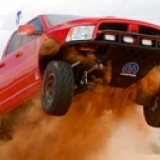- Forum
- General Discussion | Introductions | Off Topic Forum
- Photography General Discussion
- What situations are APS-C camera better to have than Full frame?
What situations are APS-C camera better to have than Full frame?
-
 Topic Author
Topic Author
- Zorka
- Lone Wolf
-
- Canon 5D Mark III
- Followers: 51
- Posts: 101
-
Points:
1203
-

- garyrhook
- Oh Wise One
-
- Nikon D850, Nikon D750, Panasonic G7K
- Followers: 912
- Posts: 11103
-
Points:
67681
Post #623788
Actually, when the crop sensor body can perform better in certain situations than a full frame. One example, for the Nikon D500, would be sports photography: long lens, fast frames per second. At 10 fps, it shoots faster than almost all of the other bodies, full or crop.
I find my D750, and 6.5 fps, just fine, thank you. If I really needed many fps, I'd go for a D5.
-

- Nikon Shooter
- Oh Wise One
-
- 3S 3X 810 850
- Followers: 197
- Posts: 13795
-
Points:
88932
Post #623793
Light is free… capturing it is not!
-

- Screamin Scott
- Moderator
-
- Nikon D610, Nikon D7100, Nikon D300, Olympus OMD E-M5 MarkII, Olympus OM-D E-M10, Olympus Pen E-P3 + film SLR's
- Followers: 1384
- Posts: 6855
-
Points:
39981
Post #623815
-

- fmw
- Newbie
- Followers: 12
-
Points:
12122
Post #623817
In terms of image quality, a larger sensor will always have benefits over a smaller one. That difference might be important or not but there is no question about the truth of it.
-

- Don Granger
- Photography Hooked
- Followers: 187
- Posts: 718
-
Points:
9851
Post #623942
-

- Scott Klubeck
- The Lounger
- Canon 5D Mark II
- Followers: 389
- Posts: 1467
-
Points:
10008
Post #623968
-

- Shadowfixer1
- Photo Elder
-
- Olympus OMD E-M1 MKII
- Followers: 1350
- Posts: 5554
-
Points:
73359
Post #624040
-

- Ozzie_Traveller
- Apprentice
-
- Currently using a Panny FZ-300 and FZ-2500 with occasional use of a Panny mirrorless G-series
- Followers: 124
- Posts: 2713
-
Points:
54251
Post #624061
This Q has been around for decades .... I can remember when users with 6 x 6cm roll film Rolliflex cameras were decrying 35mm film users, saying 'that 35mm film being so much smaller than 6x6 cannot give the quality results of the 6x6". And the 35mm people responded with 'who cares - the 35mm cameras out perform 6x6 due to the more versatile lenses" - and so it went on
Today we have cameras whose sensors & performance out-perform anything from those days - and with 15+ yrs of APS camera / lens design experience behind them, todays makers of APS stuff have got it well settled & for our benefit
When I look at many of today's cameras, they are too big & heavy for my liking - and FF will be worse. If you have your own sherpa to help carry your stuff, maybe go for it .... if you've got to do it yourself - then stick with what you can carry easily
Hope this helps
Phil from the great land Downunder
www.flickr.com/photos/ozzie_traveller/sets/
-

- Head
- Newbie
- Follower: 1
-
Points:
316
Post #624186
You'll find many saying the FF uses more light. That's not completely true.
To get the same Depth of Field you have to stop down one more stop. So, essentially that means increasing your FF by one stop to maintain DoF, shutter speed and the one stop different aperture. So the FF theoretically has one stop superior noise handling but you have to shoot one stop higher ISO to take the same image. That cuts the time in the FF exposure in half. So you get twice the light input with the FF but on the sensor half the intensity because of the reduced aperture, to take the same photograph. Many FF proponents make their case by ignoring depth of filed, which is in essence taking different picture.
When shooting at the limits of the capabilities of the gear, my K-3 puts 24MP, in the same space the 36 MP K-1 puts 15. For that reason, any bird or wildlife image taken in which the image will be heavily cropped, which is almost given for most birding pictures, the APS_c will give you more resolution on the subject. Same for working the limits with a macro lens. Most of us don't want to carry tubes or bellows APS_c gives us superior macro-magnification.
The other situation I frequently use my APS_c K-3 is hiking and outings where I don't want to carry a lot of weight. My K-3 with 18-135 and great pseudo macro capability is pretty much an all purpose set up. With a DA 55-300 PLM, you have very fast focusing do almost everything rig. What do I have to do to get the same kind of capability with the full frame? My 28-105, my 60-250 and 300 2.8 with 1.4 TC. 3 pounds compared to over 10 pounds. That's a comfortable hike compared to a hike with aching shoulders at the end.
When is it better to have the full frame... almost all the time. As long as you have the lenses to frame your subject properly FF is better one way or another. So if you know what you're shooting and you are guaranteed there won't be issues with not being able to get close to your subject (or your not going to be able to frame a macro because the minimum focusing distance of the lens won't let you) then the FF always comes out on top.
My guess is I use my FF 80% of the time. But because of the faster burst rate with my APS_c body, for birding and wildlife I take a lot more images in a much shorter time. So half my images are taken with APS-c.
IN short, on many trips, I take both. If I take just one, it's likely to be APS_c for the easier carrying and lighter lenses for the same job. But, on a nature trip with landscape and sunset opportunities, I'll take the FF. That really limits wildlife opportunities but, it's always a case of evaluating trade offs, and guessing what I might get for opportunities to take mages.
But is APS_c just like FF only worse? Hell no. Every format has it's strengths and weaknesses. Sometimes I use my Pentax XG-1 1:1.2 (don't buy that camera, I basically stole it so I use it but at MSLP, no way) crop bridge camera because it gives me the best opportunities for the results I want.
The biggest draw back to this type of question is the answers by people devoted to one camera system, FF or APS-c who don't understand the benefits of the other systems, Those of us who own lots of camera systems in different formats have much better feel for the strengths of each. Simply stated, if you're really serious, you'll have access to many different formats and use each to it's strength. Personally, even though I use my FF 80% of the time, if I had to choose I'd go APS-c. APS-c is better at doing what FF does best, than FF is at doing what APS-c does best, for my style of shooting. Others of course will be different, have different needs and opinions, and that's fine. It's up to you to figure out how things would line up for you. All the above is, is how it is for me.
- Forum
- General Discussion | Introductions | Off Topic Forum
- Photography General Discussion
- What situations are APS-C camera better to have than Full frame?
Latest Reviews
The Canon EOS R100 is an entry-level mirrorless camera introduced in 2023. But just because it’s an entry-level camera doesn’t mean it’s a bare-bones camera. Find out why in this review!
Nikon’s retro-looking Nikon Zfc is anything but retro. Under its classic body is a host of features and amenities that make it a worthwhile compact mirrorless camera for 2024.
The Canon EOS R50 is one of the newest R-system cameras from Canon. Is it worth your money? Find out all the details you need to know in this comprehensive review.
The Sony FE 70-200mm f/2.8 GM OSS II is Sony’s flagship mirrorless zoom lens. As such, it’s loaded with features and has a top-shelf build quality that makes it a top pick!
Latest Articles
The Insta360 has one of the best lineups of action cams and 360-degree cameras. With these Insta360 accessories, you can elevate your photography and videography game!
Creating impactful photos of landscapes depends on many factors, not the least of which is your talent behind the lens. This guide explores other elements required for the best product.
The Canon EOS R100 is an entry-level mirrorless camera introduced in 2023. But just because it’s an entry-level camera doesn’t mean it’s a bare-bones camera. Find out why in this review!
Are you ready to upgrade your camera? Before buying new, you might consider the value of purchasing used gear to save money.
The Olympus OM-D E-M10 Mark IV is a micro four thirds camera released in 2020. It’s an entry-level system along with the OM-D E-M5 Mark III. Use this guide to determine which one is best for you!
Blue hour photography might not be as well known as golden hour photography, but it is every bit as good a time to create epic images of landscapes. Learn how in this quick tutorial!
Nikon’s retro-looking Nikon Zfc is anything but retro. Under its classic body is a host of features and amenities that make it a worthwhile compact mirrorless camera for 2024.
Moving from taking snapshots of your dog to creating beautiful images doesn’t have to be that difficult! Use the tips outlined in this dog photography guide, and you’ll get better results in no time.
















